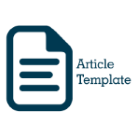GLOSSOPHOBIA: EVALUATING UNIVERSITY STUDENTS' SPEAKING ANXIETY IN ENGLISH ORAL PRESENTATIONS
Abstract
Speaking English in public or in front of peers in a classroom setting alone may create uneasy feelings to the speaker or presenter, especially to those who are not good in using a second language or foreign language. Hence, this particular study was conducted to evaluate university students’ speaking anxiety in English oral presentations in relation to their level of speaking anxiety, genders, programs and proficiency. A set of questionnaires that consisted of 33 items was adapted from Horwitz, Horwitz and Cope’s (1986) Foreign Language Classroom Anxiety Scale (FLCAS) and distributed to 199 students from four different faculties in UiTM Melaka. The data gathered through the questionnaires was then analysed using statistical analysis (SPSS). The results indicated that the participants experienced moderate level of speaking anxiety during English oral presentations due to fear or negative evaluation by their peers. Regarding genders, there was a slightly different level of anxiety where female participants were identified to be more anxious compared to male participants. Moreover, there was no statistically significant difference detected in terms of the students’ programs and their level of speaking anxiety; however, the students’ English proficiency did affect their level of speaking anxiety. Therefore, the results of this study concluded that the students’ levels of speaking anxiety and proficiency were significant in identifying their overall speaking anxiety. Thus, this can assist both the lecturers and students on how to overcome the issue in the future.
Keywords
speaking anxiety; gender; program; students’ grade; language acquisition; ESL classroom; second language learners
Full Text:
PDFCopyright (c) 2021 Jurnal ILMI
This is an Open Access article distributed under the terms of the Creative Commons Attribution-NonCommercial-NoDerivatives 4.0 International (CC BY-NC-ND 4.0), permitting copy and redistribute the material in any medium or format.


